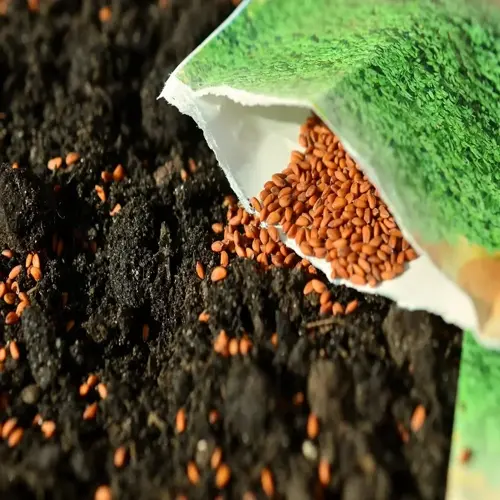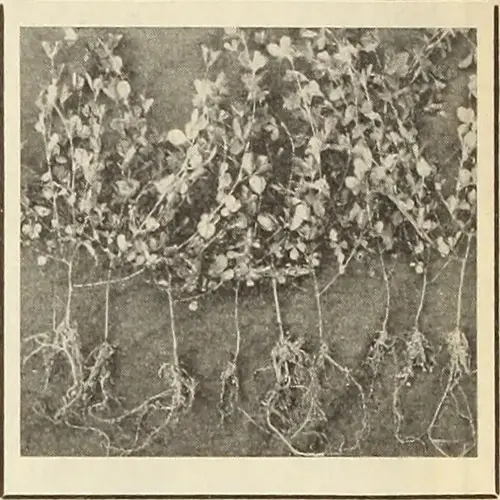3 Essential Rules: How to Store Seeds

Written by
Julia Anderson
Reviewed by
Prof. Martin Thorne, Ph.D.Learn how to store seeds long-term with airtight containers in cool, dark places.
Store seeds at temperatures below 50°F (10°C) and under 8% moisture for maximum viability.
Use paper towel methods to test germination rates of seeds to verify they will plant after each year.
Prepare seeds for storage by drying thoroughly, and for nightshades, also fermenting.
Do not freeze seeds unless they are completely dried and below 6% moisture content.
Use guidelines of cool, dry, dark, to have years of successful, self-supported gardening.
Article Navigation
Have you ever experienced that feeling of disappointment after saving seeds and finding that they do not germinate? Learning how to store seeds properly can help prevent this devastation. The three simple rules of seed storage are cool, dry, and dark. If you follow these guidelines, your seeds will thrive and grow vigorously.
Storing seeds effectively continues to pay off year after year. Home gardeners can forgo purchasing new packets annually. Small-scale growers can preserve their investment in rare varieties. Appropriate storage makes seeds last, turning them from what could have been wasted into perennial treasures in your garden. It makes gardening more sustainable and beneficial for everyone.
Choosing Storage Containers
Your original seed packets will be fine for short-term storage. However, their paper material is not very durable, and humidity will creep in. Moisture will damage your heirloom seeds. Improved containers will ensure long-term success. Your future garden will reward you!
Glass containers, such as mason jars, provide great non-porous environments. They completely block moisture. Plastic containers offer lightweight convenience. Metal tins afford unbeatable protection from rodents and insects. Choose based on your storage location and storage needs.
The most important aspect is the air-tight seal. Perfect seals are achieved by silicone gaskets that trap humidity. And locking provisions offer extra security. Always test the safe's seal before storing. Run your finger around the rim and feel for any gaps.
Put desiccant packets right among the seeds. Use one for each cup of seeds. Replace them every six months. Ensure that even if the packets are not at the bottom of the container, they touch multiple seeds while maintaining control over moisture.
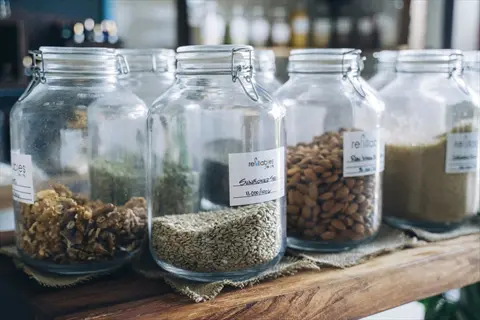
Mason Jars
- Glass construction blocks light completely while allowing visibility of contents. Ideal for long-term storage when paired with oxygen absorbers. Requires wide mouth design for easy seed packet access. Average capacity: 16 oz (473 ml) holds 20+ standard seed packets.
- Airtight seal is achieved through two-part metal lids with silicone gaskets. Perfect for maintaining consistent humidity levels below 40%. Transparent material helps identify seeds without opening. Best stored in dark cabinets or covered boxes.
- Heavy and breakable compared to plastic alternatives. Glass maintains steady temperatures better than metal. Can be used with vacuum seal attachments for extended preservation. Suitable for all seed types except high-moisture varieties.
- Labeling options include waterproof markers or removable tags. Stackable when using uniform sizes. Avoid temperature shocks to prevent cracking. Regular lid replacement needed every 2-3 years.
- Cost-effective reuse of canning jars. Ideal for organizing seeds by plant family. Separate jars for different seasons simplify rotation. Dark storage locations preserve seed dormancy.
- Freezer-safe versions withstand extreme cold. Add silica gel packs behind labels. Avoid direct sunlight exposure. Clean with vinegar before reuse.
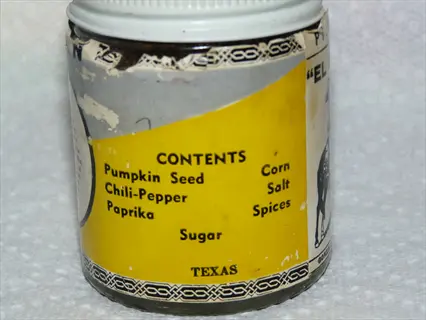
Metal Tins
- Aluminum or stainless steel construction provides maximum pest resistance against rodents and insects. Completely opaque to block all light exposure. Durable for outdoor storage in sheds or garages. Typically features hinged lids with secure clasp closures.
- Excellent thermal conductivity helps maintain cool temperatures. Lightweight yet crush-resistant compared to glass options. Lined versions prevent metal corrosion from seed oils. Ideal for humid climates where moisture intrusion is common.
- Limited visibility requires clear labeling systems. Condensation risk if moved between temperature extremes. Choose sizes between 4x6 inches (10x15 cm) to 8x10 inches (20x25 cm). Add silica gel packs to absorb residual humidity.
- Magnetic sheets can attach labels externally. Avoid storing in damp basements. Line with parchment paper for easy cleaning. Separate compartments organize seed varieties.
- Decorative options available for display. Rust-proof coatings extend longevity. Ideal for storing large seeds like beans. Flat tins maximize shelf space efficiency.
- Temperature stability prevents condensation. Use desiccant packets behind dividers. Avoid abrasive cleaners. Wipe with oil cloth for protection.
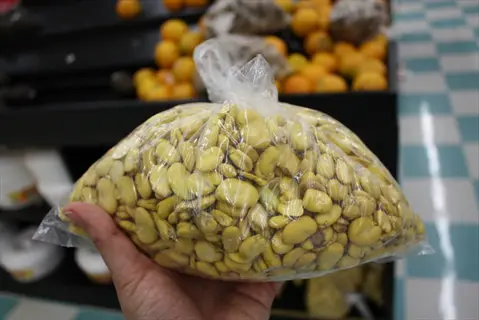
Freezer Bags
- Heavy-duty polyethylene construction withstands freezer temperatures down to -4°F (-20°C). Thicker than standard bags with double-seal technology. Transparent material allows seed identification while blocking light when stored in darkness.
- Most cost-effective solution for large seed collections. Compact storage when air is removed before sealing. Choose quart (946 ml) or gallon (3.8 L) sizes based on volume needs. Write labels directly on bags with permanent markers.
- Less durable than rigid containers for long-term use. Susceptible to punctures from sharp seed pods. Include oxygen absorbers to prevent condensation in cold storage. Best for seeds dried below 8% moisture content.
- Fold top before sealing to create air buffer. Store bags inside protective boxes. Separate varieties with index cards. Avoid overfilling to prevent bursting.
- Write dates with UV-resistant ink. Layer bags with cardboard inserts. Ideal for short-term seed swaps. Freezer protection lasts 2-3 years maximum.
- Check seals monthly for integrity. Replace after 5 freeze-thaw cycles. Keep away from heat sources. Organize by expiration date.
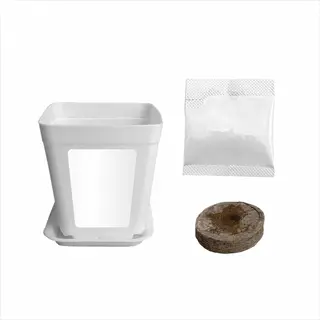
Sealed Plastic Boxes
- Rigid polypropylene containers with gasket-sealed locking lids. Stackable design maximizes storage space efficiency. Transparent versions allow content visibility while opaque types block light. Standard sizes range from 0.5 to 5 gallons (1.9 to 19 L).
- Waterproof construction protects against humidity fluctuations. Durable enough for garage or basement storage environments. Modular systems with dividers organize different seed varieties. Lighter and more shatter-resistant than glass alternatives.
- Potential for static electricity buildup in dry conditions. Avoid PVC containers which may off-gas chemicals. Ensure FDA-approved food-grade materials for seed safety. Include desiccant packs to maintain under 40% relative humidity.
- Color-code lids for quick identification. Nest smaller boxes inside larger ones. Add moisture indicators for monitoring. Avoid extreme temperature changes.
- Drill ventilation holes if needed. Label with removable tape markers. Ideal for bulky seeds like corn. Vertical storage saves counter space.
- Wash with mild soap annually. Check gasket elasticity regularly. Store away from direct sunlight. Use silica beads in corners.
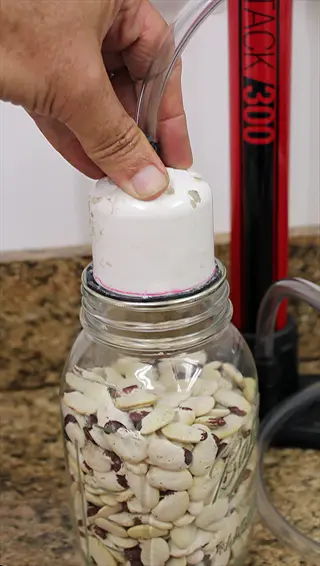
Vacuum-Sealed Bags
- Specialized bags with textured interiors allow complete air removal. When sealed, reduce oxygen exposure to near-zero levels. Compatible with standard home vacuum sealing systems. Transparent material shows contents while blocking light in storage.
- Extremely space-efficient when compressed to minimum volume. Creates anaerobic environment that inhibits mold growth. Ideal for freezing seeds long-term when properly dried. Standard sizes accommodate seed packets or bulk seeds.
- Requires special equipment for proper sealing technique. Bags are single-use unless resealable features included. Not suitable for seeds with sharp edges or points. Always include oxygen absorbers before final sealing.
- Double-bag fragile seeds for protection. Label before vacuum sealing. Store flat for maximum organization. Ideal for archiving rare varieties.
- Use moisture-proof barrier bags. Avoid crushing delicate seeds. Seal in climate-controlled rooms. Maximum freezer longevity: 10+ years.
- Inspect for seal failures quarterly. Write contents with indelible ink. Store in protective bins. Separate by plant families.
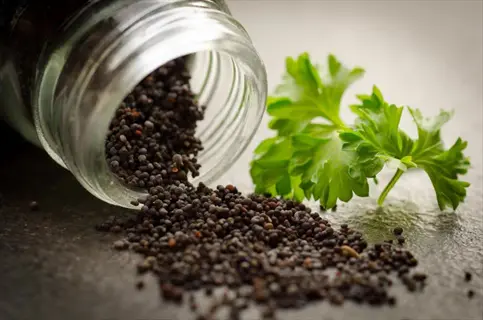
Repurposed Spice Shakers
- Small glass or metal containers with built-in shaker tops. Ideal for organizing individual seed varieties separately. Shaker lids allow controlled pouring during planting season. Typically hold 2-4 oz (60-120 ml) of small seeds.
- Original labels can be removed with alcohol for relabeling. Compact size fits neatly in drawers or small storage boxes. Metal lids provide reasonable light blockage for seeds. Cost-effective reuse of existing household items.
- Limited capacity unsuitable for large seed quantities. Shaker holes may allow moisture entry in humid environments. Seal holes with tape during storage periods. Best for frequently used herb and flower seeds.
- Group in themed sets for easy access. Apply new labels with waterproof tape. Store with silica gel packets. Avoid temperature fluctuations.
- Clean thoroughly with boiling water. Dry completely before filling. Ideal for seed starting mixes. Decorative options enhance workspace.
- Check for condensation monthly. Replace shaker tops if rusty. Organize alphabetically. Protect from direct light exposure.
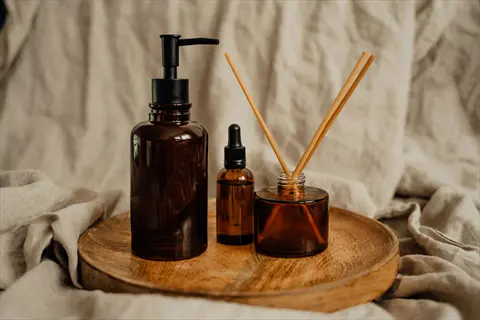
Amber Glass Bottles
- Dark-tinted glass provides natural UV light protection without additional covering. Pharmaceutical-grade containers with tight-fitting lids. Ideal for light-sensitive seeds like lettuce or peppers. Standard sizes from 2 oz to 16 oz (60 ml to 473 ml).
- Built-in droppers allow precise seed portioning during planting. Excellent moisture barrier properties. Neutral glass material prevents chemical interactions. Suitable for all climate conditions.
- Fragile and heavier than plastic alternatives. Limited opening size for large seeds. Labels require light-colored markers for visibility. Best stored in padded containers.
- Use for high-value hybrid seeds. Add oxygen absorbers for longevity. Store in temperature-stable environments. Dark color hides contents from light.
- Clean with sterilizing solutions. Dry thoroughly before reuse. Ideal for medicinal herb seeds. Stack with protective dividers.
- Avoid freezing due to breakage risk. Label with white paint markers. Organize by planting season. Check seals annually.
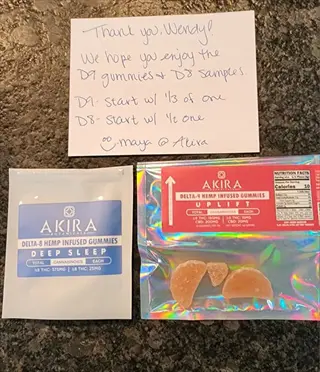
Mylar Bags
- Metallized polyester layers create complete light and oxygen barriers. Heat-sealable openings ensure permanent closures. Lightweight yet puncture-resistant material. Blocks 100% of UV radiation for maximum protection.
- Extremely compact when empty and folded. Maintains integrity in temperatures from -40°F to 300°F (-40°C to 149°C). Ideal for decade-long storage of heirloom varieties. Standard sizes accommodate bulk seeds.
- Requires heat sealer for proper closure. Difficult to reseal after opening. Not reusable for multiple seasons. Labels must be applied before sealing.
- Include desiccant and oxygen absorbers. Store in protective bins. Ideal for seed exchanges. Write information with permanent markers.
- Use for long-term genetic preservation. Avoid sharp objects nearby. Seal in low-humidity environments. Maximum protection against pests.
- Check for pinhole leaks annually. Store flat for space efficiency. Separate varieties with cardboard. Keep in cool dark locations.
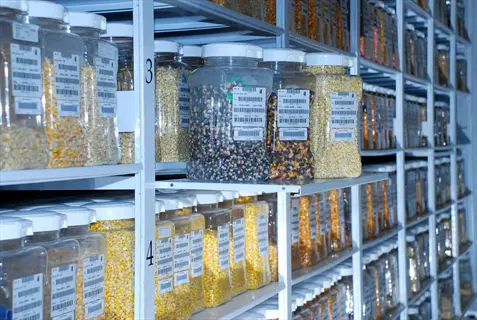
Acrylic Canisters
- Crystal-clear plastic allows full visibility while blocking UV rays. Airtight screw-top lids with silicone seals. Lightweight and shatterproof alternative to glass. Square designs maximize storage efficiency on shelves.
- Stackable with interlocking lid features. Maintain consistent humidity levels. Resistant to temperature-induced warping. Ideal for countertop storage in kitchens.
- Static-prone in dry environments. May scratch easily during handling. Limited sizes available commercially. Requires desiccant packs for humid areas.
- Label with removable vinyl stickers. Use for daily-access seeds. Avoid abrasive cleaners. Wipe with microfiber cloths.
- Group by plant categories. Add color-coded tags. Ideal for seed display. Protect from direct sunlight exposure.
- Check seal integrity monthly. Store away from heat sources. Organize by expiration date. Clean with vinegar solution.
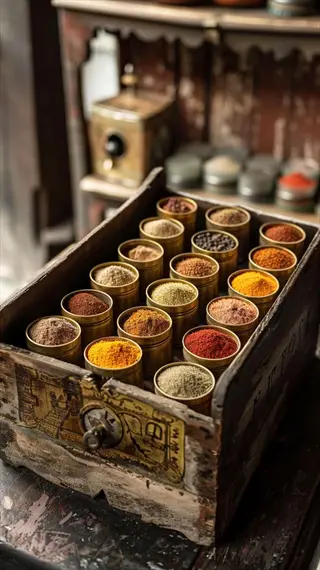
Wooden Seed Chests
- Solid cedar or oak construction with divided compartments. Natural pest-repellent properties. Felt-lined drawers protect seeds from vibration damage. Decorative storage solution for home offices.
- Built-in humidity regulation from porous wood. Divided sections organize varieties systematically. Locking mechanisms secure valuable collections. Ideal for moderate climate environments.
- Heavy and difficult to relocate. Requires periodic oiling maintenance. Not suitable for damp basements. Limited mobility compared to plastic options.
- Use silica gel in corners. Line drawers with parchment. Avoid liquid spills. Dust with soft brushes regularly.
- Seasonal reorganization recommended. Store in temperature-stable rooms. Ideal for heritage seeds. Add glass cover for display.
- Check for insect damage annually. Maintain 40-50% humidity. Keep away from direct heat. Polish with beeswax annually.
Seed Viability Timelines
Some seeds have a very brief life cycle, while others can remain viable for many years. To the very brief life cycle of seeds, such as onions (Allium cepa) and parsnips (Pastinaca sativa), the seeds hold varietal germination requirements, store below 36°F (2°C) with a moisture content of less than 6%. A viability of less than one season is normal.
Short-lived seeds consist of parsley (Petroselinum crispum) as well as corn (Zea mays). Seeds should be kept oscillating between 40°F and 45°F (4 °C and 7°C). Keep moisture levels below 8% and store seeds in glass jars. These seeds are generally viable for one to two years if managed wisely.
Intermediate seeds, such as beans (Phaseolus vulgaris) and carrots (Daucus carota), can last much longer. Cold storage is best, between 50°F and 55°F (10 °C and 13°C); however, they can also be stored in metal tins with a moisture content below 10%. You can typically expect three to four years of healthy germination from these seeds.
Lettuce (Lactuca sativa) and tomatoes (Solanum lycopersicum) are long-lived champions. Store seeds at 60-65°F (16-18°C) with moisture below 12%. Use sealed boxes for protection. These seeds can often remain viable for five to six years.
Some seeds with exceptionally long life spans, such as radish (Raphanus sativus) and squash (Cucurbita spp.), require a warmer storage temperature of 68-72°F (20-22°C) and a moisture content of less than 15%. The dark containers prevent light injury. These seeds could last for seven years or more.
Germination Testing
Utilize the paper towel method to check your seeds. Soak a paper towel until slightly damp, not dripping. Place ten seeds, spaced apart, on one half of the towel. Fold the towel over, then place it in a labeled plastic bag. Maintain a temperature between 70°F and 85°F (21 °C and 29°C) for optimal results.
Prevent mold by checking moisture daily. Apply a light spray only if the towel becomes dry. Bags should be kept in total darkness. Bags should be opened for a brief air exchange every other day. If mold appears, remove affected seeds immediately. Discard seeds to protect all others.
After 5-14 days, you can now determine your germination rate. Count seeds with visible roots at least 1/8 inch. Take the number of sprouted seeds and divide by ten. Then multiply by one hundred. This will yield your germination percent. Be sure to record this number carefully.
Base your planting decisions on the results of your tests if test results are above 70%, plant as usual. 50-69%, you double the amount of seeds. Below 50%, you need to discard old seeds and start over. This approach will save you time and money in the garden.
Preparation Phase
- Materials needed: 10 seeds of one variety, paper towels, plastic ziplock bags, water spray bottle, permanent marker
- Environment setup: Maintain consistent temperature between 70-85°F (21-29°C) using heat mats or warm room location
- Seed selection: Choose representative seeds without damage from your stored collection; avoid testing mixed varieties together
Moisture Setup
- Dampening technique: Saturate paper towel until thoroughly moist but not dripping; excess water causes rot while insufficient moisture prevents sprouting
- Seed placement: Space seeds evenly on half the towel allowing 1 inch (2.5 cm) between each; fold towel over to cover completely
- Bag sealing: Slide towel into labeled plastic bag leaving 25% air space; seal tightly to create miniature greenhouse effect
Incubation Period
- Darkness requirement: Store bags in completely dark location like cupboard or covered box; light exposure triggers irregular germination
- Temperature monitoring: Check daily with thermometer; fluctuations beyond 15°F (8°C) invalidate results for most vegetable seeds
- Moisture maintenance: Spray towel lightly every 48 hours if drying occurs; avoid oversaturating which promotes fungal growth
Evaluation Process
- Inspection timeline: Examine seeds after 5 days for fast-germinators like radishes; wait 10-14 days for slow species like parsley
- Sprout criteria: Count seeds with visible root radicle ≥1/8 inch (3 mm); discard seeds showing mold instead of root development
- Documentation: Record sprout counts daily; photograph abnormalities like stunted or discolored sprouts for future reference
Result Interpretation
- Calculation formula: (Sprouted seeds ÷ 10 tested) x 100 = Germination percentage; round to nearest whole number
- Planting guidance: ≥70% = sow normally; 50-69% = double seeding density; <50% = replace seeds
- Seedling usage: Transplant healthy test-sprouts to soil if roots are under 1/2 inch (1.3 cm); handle with tweezers to avoid damage
The Three Key Rules
Maintain seed storage between 32°F and 50°F (0°C and 10°C) to slow the respiration rate. Seeds remain dormant but alive. Basements are cool at 55°F (13°C). Refrigerators maintain a temperature of 37°F (3°C). Avoid garages that don't keep a constant temperature. Stability protects the cells of seeds.
Control the moisture with silica gel packets. Target keeping seeds at a moisture level below 8%. Place desiccants among seeds. Rice grains act organically. Powdered milk will absorb and last for 6 months. Mason jars with rubber-sealed lids can work. Vacuum-sealed bags will stop moisture. Dried seeds inhibit mold.
Provide seeds complete darkness at all times. Light triggers sleeping seeds. Place seeds in metal tins. Wrap glass jars in cloth. Use dark storage areas. Never store near windows. Light damages seeds' DNA over time. Amber glass helps light-sensitive types like lettuce.
Cool Temperature Control
- Optimal range: Maintain 32°-50°F (0°-10°C) for most seeds; slows metabolic activity without freezing damage
- Location examples: Basements (55°F/13°C), refrigerators (37°F/3°C), insulated cabinets away from heat sources
- Avoid: Temperature fluctuations >15°F (8°C) daily; garages/sheds where temps swing seasonally
- Science basis: Every 18°F (10°C) drop doubles seed longevity by reducing respiration rates
Dry Environment Maintenance
- Moisture targets: Keep seeds below 8% moisture content; use silica gel to maintain <40% relative humidity
- Desiccant options: Silica gel packets (reusable), rice grains (organic), powdered milk (absorbs for 6 months)
- Container seals: Mason jar rubber gaskets, silicone-sealed plastic boxes, vacuum-sealed bags with oxygen absorbers
- Risk prevention: Mold growth accelerates above 60% RH; test dryness with snap test (seeds break cleanly)
Complete Darkness Provision
- Light-blocking solutions: Opaque containers (metal tins), dark storage rooms, cloth-wrapped glass jars
- Physiological impact: Light triggers phytochrome conversion ending dormancy; UV radiation damages DNA
- Practical steps: Store seeds immediately after harvesting/purchasing; avoid transparent containers on shelves
- Exception handling: Use amber glass for light-sensitive seeds like lettuce; never store near windows or grow lights
Preparing Seeds for Storage
Use the snap test to check seed dryness. Bend seeds between fingers: Dry seeds will snap cleanly, moist seeds will bend without snapping. For larger seeds, like beans, use the nail test to check for readiness. Press your nail into the seed, the lack of a dent will indicate readiness.
Using dry processing to clean flower or herb seeds. Rub seed heads against screens. Allow breezes to blow away the chaff. For tomatoes or peppers, use wet processing, place seeds in water. Ferment for three days. Rinse in a fine sieve.
Correctly ferment nightshade seeds. Place seeds into jars filled with equal parts water. Stir them twice a day, and stop stirring when the seeds sink to the bottom. White mold is a sign it's completed. This sap removes any germination inhibitors. It also helps to reduce disease transfer. Your seeds are ready to plant.
Mark containers using permanent ink. Write out species, their variety, and the harvest date. Just like a color harvest guide, use dots to mark the time of the plant harvest. Use Red for spring planting. Blue is for summer sowing. Green is used for fall crops. Take pictures of your labels for a backup record. Please ensure that you keep this information safe.
Optimal Harvest Timing
- Fruit maturity: Harvest tomatoes when fully ripe but not rotten; collect peppers when color-changed completely
- Pod readiness: Gather bean/pea pods when dry and rattling; avoid premature collection in damp weather
- Seed development: Check flower heads daily; collect when seeds turn dark brown and detach easily
Thorough Cleaning Process
- Dry method: Rub flower heads over screens to separate chaff; winnow using fans or natural breeze outdoors
- Wet method: Soak tomato seeds 24-72 hours for fermentation; rinse through sieves under running water
- Debris removal: Remove immature seeds floating in water; discard discolored or damaged specimens immediately
Effective Drying Techniques
- Air circulation: Spread seeds in single layer on mesh screens; use fans in low-humidity (<40%) environments
- Temperature control: Dry at 80-95°F (27-35°C) maximum; avoid direct sunlight which damages embryos
- Duration guidelines: Allow 3-7 days for small seeds; large beans/peas require 10-14 days minimum drying
Fermentation for Nightshades
- Container setup: Place tomato/pepper seeds in glass jars with equal water; stir twice daily for 3 days
- Microbial action: Beneficial bacteria dissolve gelatinous coatings; prevents disease transmission
- Termination signs: Stop when seeds sink; white mold indicates process completion for viable seeds
Dryness Verification
- Snap test: Seeds should break cleanly when bent; bending indicates >12% moisture needing further drying
- Nail test: Press fingernail into large seeds like beans; no indentation means <10% moisture content
- Storage readiness: Seeds should feel hard and rattle in containers; sticky textures require re-drying
Labeling and Organization
- Permanent marking: Use archival ink pens on waterproof labels; include species, variety, and harvest date
- Storage coding: Apply color dots for planting seasons; red=spring, blue=summer, green=fall planting
- Database backup: Photograph labels before storage; record in garden journal with germination notes
5 Common Myths
When sheltered in a cool, dark place, seeds can be stored without special treatment or humidity control indefinitely.
As seeds age they lose viability from cellular respiration and degradation of enzymes, even in the best storage conditions. Preparing seeds for storage involves a thorough drying process to lower than 8% moisture, because anything above this level accelerates seed deterioration. Most commonly grown vegetable seeds lose more than half their viability over 1-5 years without maintaining humidity levels of less than 40% RH using a desiccant, like silica gel packets.
Freezing seeds always extends their lifespan substantially, regardless of their initial moisture content or preparation methods.
Freezing only preserves seeds effectively when they're thoroughly dried below 6% moisture content, because ice crystals form in inadequately dried seeds and rupture cellular structures during freezing. This irreversible damage manifests as visible cracks in seed coats post-thawing, resulting in zero germination. Safe freezing requires vacuum-sealed bags with oxygen absorbers, and seeds must pass the snap test (breaking cleanly) before freezing to confirm sufficient dryness for cryopreservation.
Original commercial packets of seeds can adequately provide long-term protection and do not need to be transferred into specialized containers.
Paper seed envelopes will allow moisture to penetrate in just months, and mold spores will take advantage and begin infiltrating ways of compromising your seeds. The moment your seeds are opened, they should be immediately transferred into airtight containers with silica gel desiccants. The paper will begin to lose its protective powers past 50% relative humidity, and you risk the seeds lumping together and developing mold while losing germination rates by 30-70% within the same growing season from simply being in contact with moisture for too many days!
Seeds necessitate the same storage conditions because they fundamentally require the same biological preservation conditions.
Storage requirements may vary tremendously by species. Onions require temperatures at near freezing (32F/0C) whereas tomatoes will survive storage at room (68F/20C) temperatures. Short-lived seeds need absolute humidity control below 40% RH (e.g. parsnips); conversely, long-lived seeds (e.g. radishes) remain viable at 50% RH. Customization is essential; failure can lead to differences in viability by more than 300% between species, with short-lived, moisture-sensitive seed varieties losing the ability to germinate within months when stored generically.
Light exposure during storage doesn't affect dormant seeds since they're biologically inactive and unresponsive to photonic stimulation.
Light triggers phytochrome conversion that terminates dormancy, initiating biochemical processes that deplete energy reserves even without germination. Cumulative photonic exposure causes DNA damage through UV radiation, reducing germination rates by 15-40% annually. Opaque containers are essential because UV penetrates clear plastic over time, and amber glass provides only partial protection for light-sensitive species like lettuce and peppers stored long-term.
Conclusion
Don't forget these three golden rules for seed success: keep them cool, dry, and dark. The premise for preservation. They work in tandem to slow seed deterioration, when you use them together, you will achieve the best results for longevity. Your seeds deserve this!
Compare the lifespans of different seeds. Tomato seeds last five years when stored properly. Onion seeds last one season. This is an example of how customized storage impacts lifespans. Understanding your seeds is key. Treat them according to their specific needs.
Periodically perform germination tests before the beginning of the planting season. This easy test will save you time and effort. Every year, do the paper towel test. It will determine the effectiveness of your seed storage. Absolutely do not guess the viability of the seed. Testing will put your mind at ease.
Good storage contributes to your self-sufficiency. You control your supply of seeds for years. You are preserving heirloom varieties. You are sharing seeds with your fellow gardeners. You will enjoy sustainable gardening. Your work creates a lasting abundance season after season.
External Sources
Frequently Asked Questions
Can seeds be safely stored in refrigerators?
Refrigeration is effective only for thoroughly dried seeds below 6% moisture content. Use airtight containers with desiccants to prevent condensation damage. Most vegetable seeds last 2-5 years at 35-40°F (2-4°C) when properly prepared.
Are airtight containers necessary for seed storage?
Absolutely. Airtight containers prevent humidity damage and maintain optimal conditions:
- Glass jars with silicone seals block moisture ingress
- Vacuum-sealed bags with oxygen absorbers extend longevity
- Metal tins protect against pests and light exposure
How long do seeds remain viable in mason jars?
Mason jars preserve seeds for 3-8 years when stored correctly. Viability depends on:
- Initial seed dryness (must pass snap test)
- Consistent storage temperature below 50°F (10°C)
- Use of desiccant packets to control humidity
- Complete darkness maintenance
Can Ziploc bags protect seeds during storage?
Freezer-grade bags work for short-term storage under specific conditions:
- Only with oxygen absorbers for under 6 months
- Must avoid temperature fluctuations causing condensation
- Never use for long-term preservation beyond 1 year
What temperature permanently destroys seed viability?
Seeds suffer irreversible damage above 100°F (38°C) through protein denaturation. Critical thresholds include:
- Short exposures over 120°F (49°C) kill most varieties
- Repeated freeze-thaw cycles crack seed coats
- Storage above 70°F (21°C) halves longevity annually
Does refrigeration improve germination rates?
Refrigeration benefits only specific seeds requiring stratification. For most varieties:
- Cold storage maintains viability but doesn't enhance germination
- Pre-chilling mimics natural winter conditions for some perennials
- Test germination rates annually using paper towel method
How to identify spoiled seeds before planting?
Conduct these viability checks:
- Snap test: dry seeds break cleanly, moist ones bend
- Visual inspection for mold, discoloration, or insect damage
- Float test: dead seeds float in water
- Germination test with paper towels
Why is seed drying essential before storage?
Proper drying prevents microbial growth and preserves cellular integrity. Seeds must reach:
- Under 8% moisture content for room temperature storage
- Below 6% for freezer preservation
- Verified through snap or nail indentation tests
Are there legal restrictions on saving seeds?
Most home seed saving is legal, but patented hybrids have limitations:
- Heirloom varieties can always be saved and replanted
- Commercial hybrids may have plant patent restrictions
- Always check seed packaging for usage terms
What containers maximize seed longevity?
Optimal containers combine light-blocking and moisture protection:
- Amber glass bottles for light-sensitive varieties
- Mylar bags with oxygen absorbers for decades-long storage
- Vacuum-sealed mason jars with desiccants
- Metal tins for pest-prone environments
